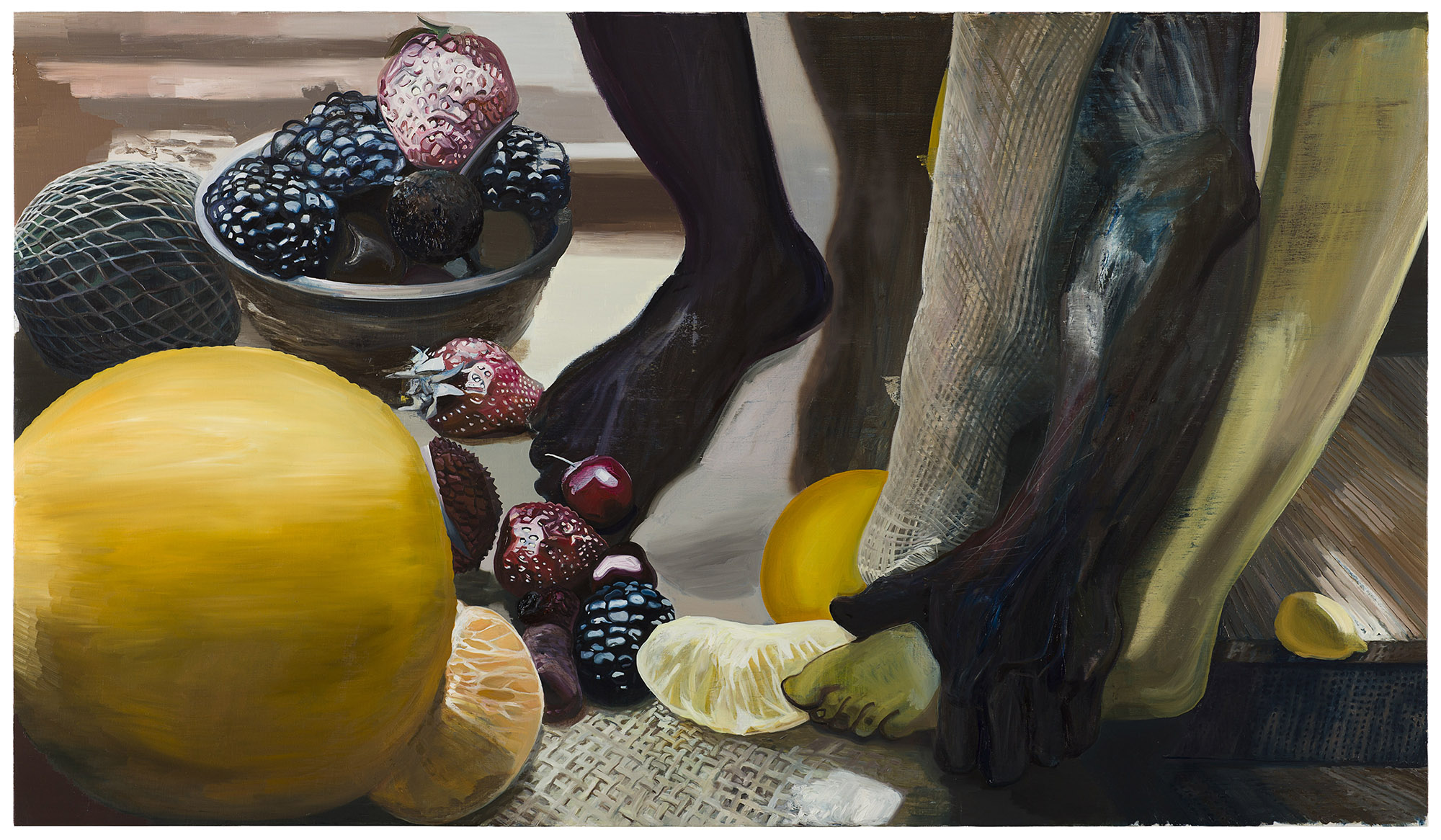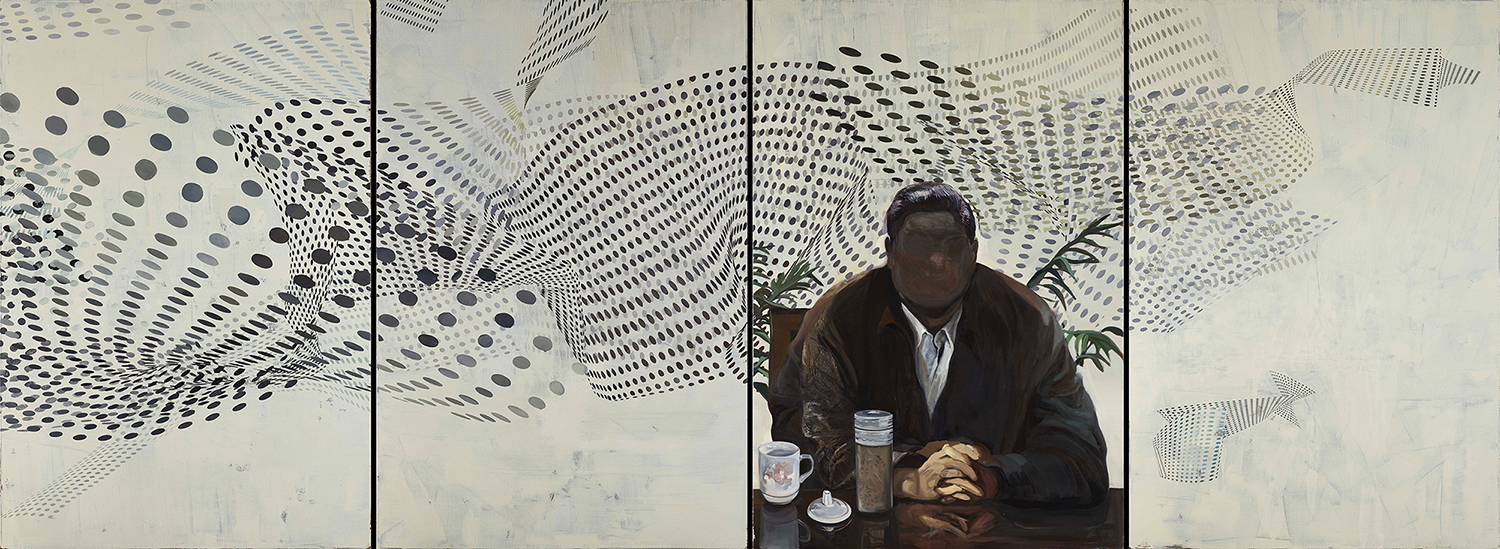Shows
Wang Zhibo’s “He No Longer Looks Human”


A woman turned into corn cobs; beheaded or multi-limbed bodies staged on absurd backdrops involving plastic rabbits or disproportionate fruits: at first glance, Wang Zhibo’s paintings create incongruous encounters between unrelated objects and human figures. With theatrical settings and symbolism hinting at both classical and modern painting—from Michelangelo’s torsos to De Chirico’s unsettling town squares—Wang’s work is a clash of time and cultures that reflects the constantly shifting and overlapping visual languages of today’s globalized world.
The title of Wang’s latest solo exhibition at Shanghai’s Edouard Malingue Gallery, “He No Longer Looks Human,” refers to a passage in the New Testament describing the appearance of a beaten and disfigured Jesus before his crucifixion. The text can also be read metaphorically: in bearing this suffering and dying for our sins, Jesus ceases to be the mere flesh and bones of a mortal body, and becomes a holy being. This duality between the physical and the symbolic body is at the heart of Wang’s new series. While she continues to treat limbs as objects, examining their surface, history and expression, she pushes further her exploration of human gestures to embrace the complexity of their socially constructed dimension.

Untitled (2018) juxtaposes four mismatched legs, one of them a sickly green; a dark-skinned downward-reaching arm; and an array of fruits, including bulging, oversized berries and melons in a composition that is simultaneously classical in its reference to Dutch still life paintings, yet rendered in a starkly unconventional style. The rules of perspective are not respected, and the eyes wander though a disorganized yet harmonious space in which shapes and forms dialogue well, with colors and textures of the fruits echoed in the skin of body parts. The legs and arm are presented in an artificial arrangement, and the unnatural colors and textures of the legs suggest that they may be from dismembered statues rather than humans. The arm, though, grips the green foot in a motion that suggests a human subject, making the viewer question whether the limbs are, in fact, sculptures, and thus interrogating the relationship and differences between human beings and objects.

Wang moves beyond the tangible world to the virtual realm in Sitting (Saint 1, 2, and 3) (all 2018), three portraits based on archetypal images of political figures—combining typical poses that convey authority, and religious symbols—against a backdrop of swirling, geometric patterns that resemble computer screen savers, introducing a digital language to the work. The dotted patterns do not, in themselves, carry meanings that we are able to decode, reflecting the ambiguity surrounding constructed, virtual realities. Furthermore, faces of two of the figures are blurry and almost deleted, while the head of the third man is open at the back, as if in a state of disintegration, depicting the characters as mere images, easily manipulated and fundamentally unreal.

Wang takes this erasure of the body even further in Female! (Self Portrait) (2018), a painting of a woman facing away from the viewer, separated from a gorilla by a semi-transparent screen, flimsy as a bride’s veil. The figure’s face is completely featureless—like so many of the obscured, deformed figures in Wang’s works—focusing attention on her athletic, muscular physique. The body seems poised to fight, though the gorilla is in an impassive pose—could the gorilla she faces be a projection of herself in animal form? The fleshy pinks, bruised purples and deep browns, a palette reminiscent of Francis Bacon’s figurative paintings, refer directly to the body, yet the removal of visible facial features subsumes humanity and identity under a deeper animality.
As a painter, Wang has compared herself to a farmer, painstakingly shaping not the land, but rather the forms depicted on her canvas. This manipulation and distortion of shapes, textures and colors in the works in "He No Longer Looks Human" reflected the artist’s ongoing quest to represent the inexhaustible dimensions of constructed and perceived realities.
Wang Zhibo’s “He No Longer Looks Human” is on view at Edouard Malingue Gallery, Shanghai, until May 6, 2018.







